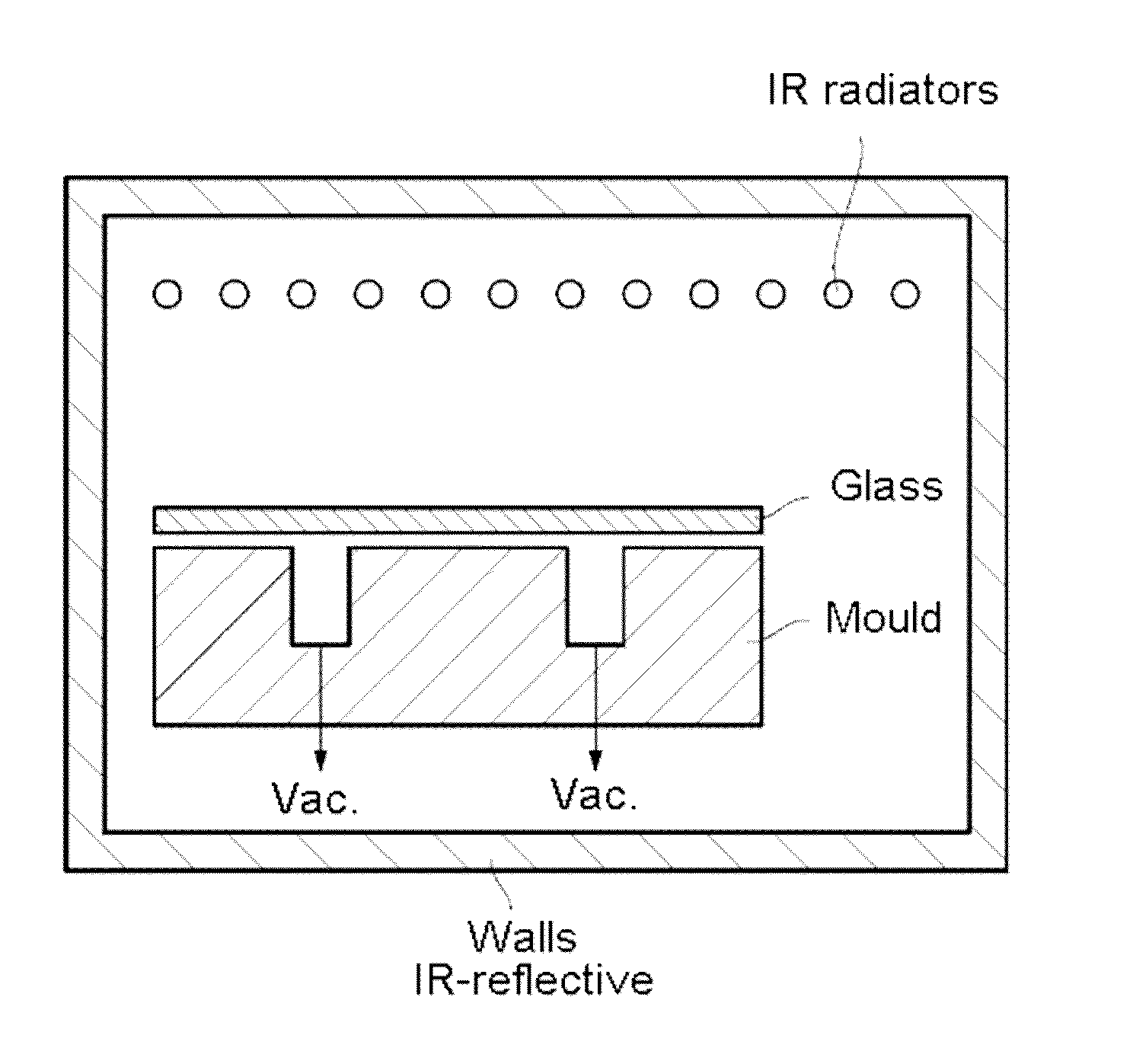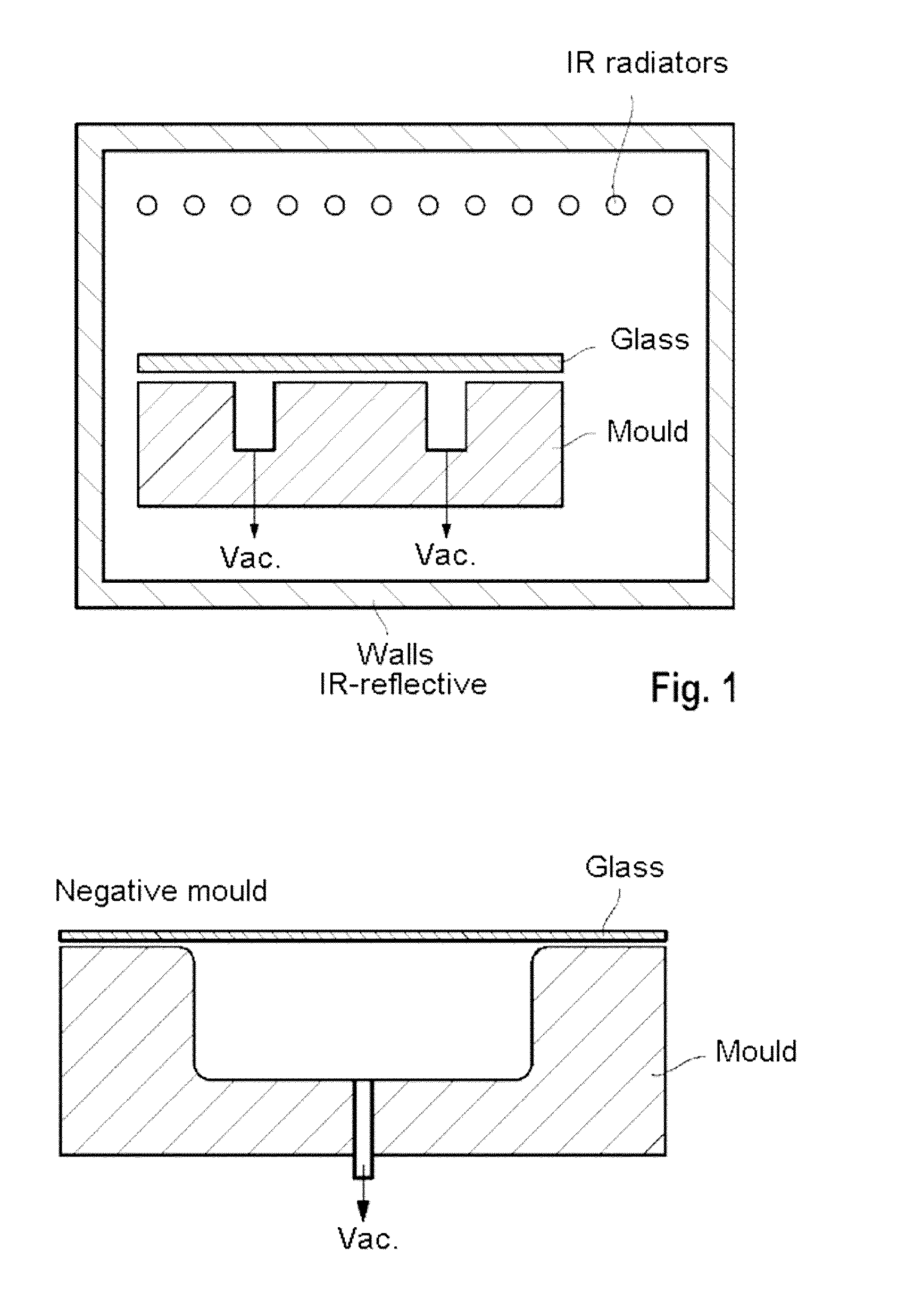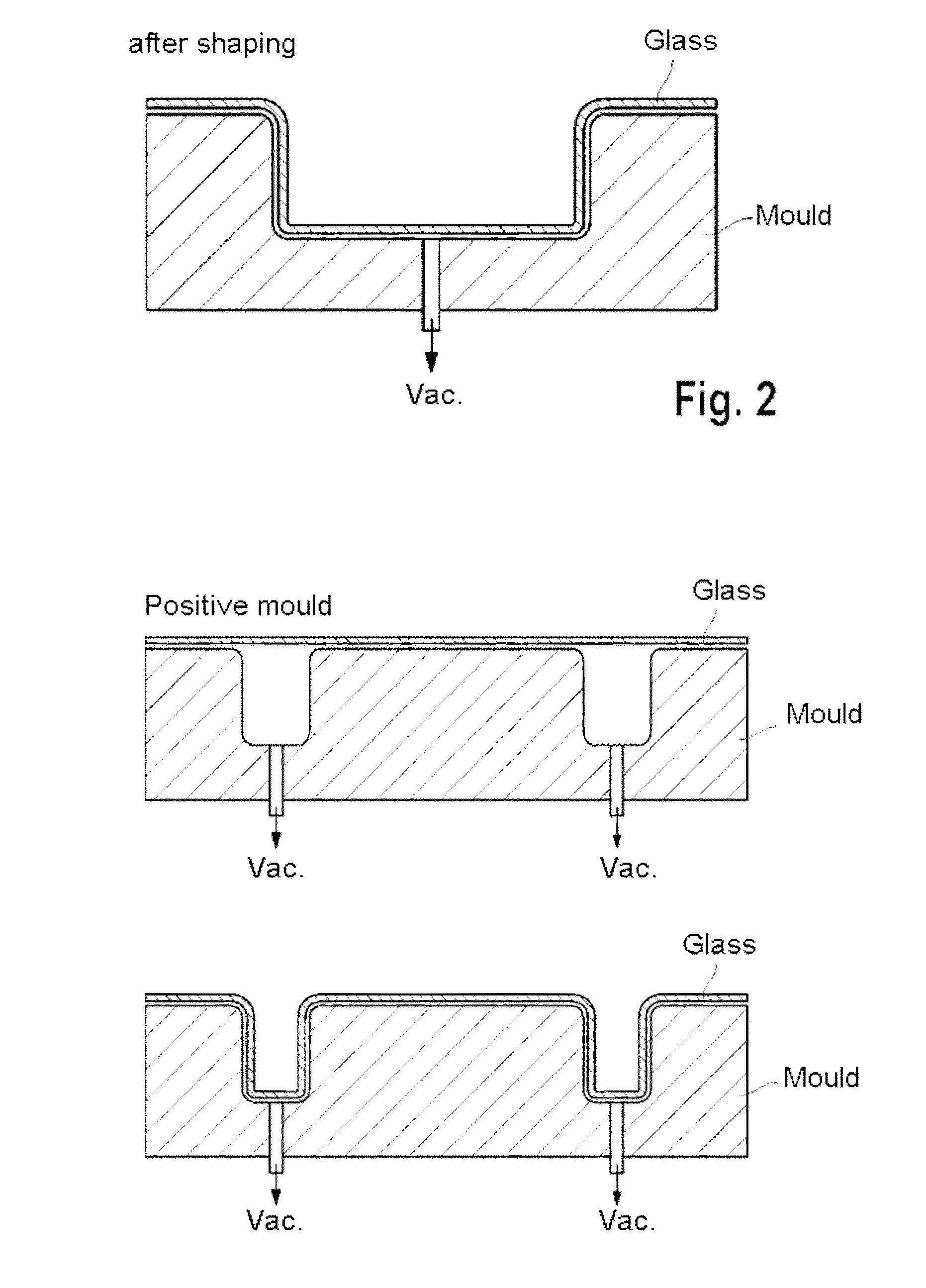Method for manufacturing molded glass articles, and use of the glass articles manufactured according to the method
a technology of molded glass and glass articles, which is applied in the direction of glass tempering apparatus, glass making apparatus, glass shaping apparatus, etc., can solve the problems of difficult general long- and medium-wave ir radiators are not a solution, and the difficulty of heating by means of ir radiation
- Summary
- Abstract
- Description
- Claims
- Application Information
AI Technical Summary
Benefits of technology
Problems solved by technology
Method used
Image
Examples
example
[0088]Deformation of Thin Sheet Glass (LAS 80) with SWIR Radiation
[0089]Installation: SWIR Surface Heating Unit with Permanent Air Cooling
[0090]The aim of the tests is to test the principles of gravity deformation of glass LAS 80, having a thickness of 0.5 mm-1.0 mm, in 2D and 3D moulds with SWIR technology on Quarzal moulds.[0091]Unit [type]: SWIR surface heating unit (Quarzal walls)[0092]Dimensioning w×d×h [mm]: 300×300×300[0093](internal dimensions from wall to wall)[0094]Wall material [type]: Quarzal N on all sides[0095]Heat insulation [type]: none[0096]Radiator design: short-wave IR radiator[0097]Radiator arrangement: under the ceiling surface, parallel to the width of the unit[0098]Number of radiators [quantity]: 10[0099]Power [kW]: 10[0100]Colour temperature [K]: 3000[0101]Details / remarks: The radiators are separated from the heating chamber by a quartz glass plate having a thickness of 5 mm. Cooling air is supplied to this radiator chamber.
[0102]SWIR Unit with Quarzal Walls ...
PUM
| Property | Measurement | Unit |
|---|---|---|
| radii | aaaaa | aaaaa |
| narrow radii | aaaaa | aaaaa |
| radii | aaaaa | aaaaa |
Abstract
Description
Claims
Application Information
 Login to View More
Login to View More - R&D
- Intellectual Property
- Life Sciences
- Materials
- Tech Scout
- Unparalleled Data Quality
- Higher Quality Content
- 60% Fewer Hallucinations
Browse by: Latest US Patents, China's latest patents, Technical Efficacy Thesaurus, Application Domain, Technology Topic, Popular Technical Reports.
© 2025 PatSnap. All rights reserved.Legal|Privacy policy|Modern Slavery Act Transparency Statement|Sitemap|About US| Contact US: help@patsnap.com



